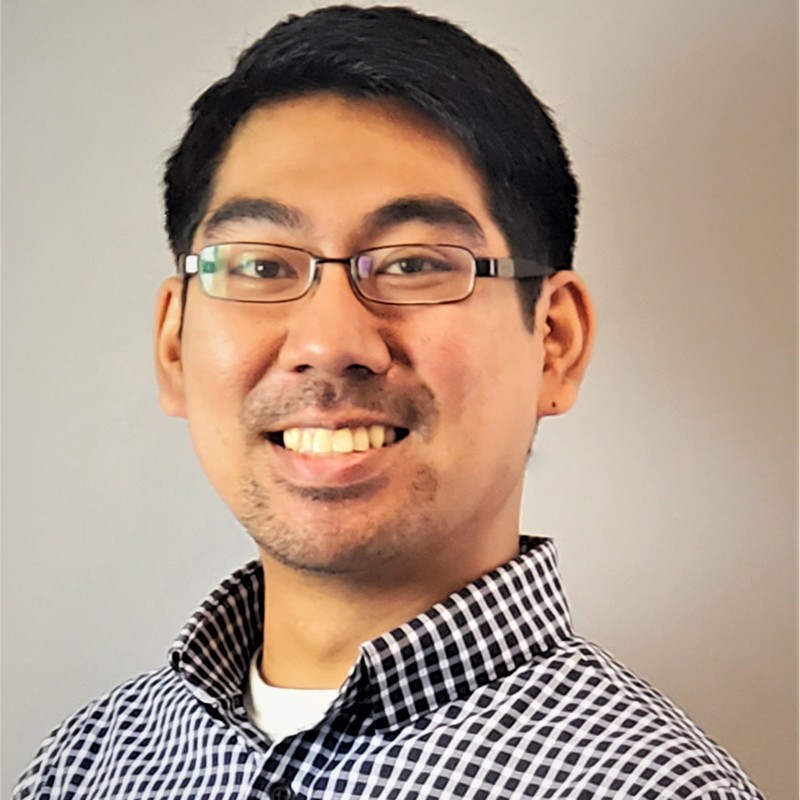Learn Enough that the Unfamiliar Becomes Familiar
By Alec Arbia, Written Communications Assistant
“I think what inspired me to enter this field was how unfamiliar everything about it was,” says Francis Kyle Cielo, MSE alumnus. “Before I was introduced to materials science and engineering (MSE), I already had some idea as to what other engineering majors entailed. But my curiosity of how the principles in MSE affected a variety of things in our daily life is what really drove me to enter the field.”
Cielo’s introduction to MSE took place at a UConn Engineering Career Fair. “I remember there being some students from the UConn Material Advantage Student Chapter (UCMA) at the booth. They were very passionate in explaining how structure affected properties, processing affected structure, and examples of where this was put into action. I think having such an engaging conversation with students who truly loved learning more about their field is what inspired me to learn more and join them. This kind of energy is something I also like to express when talking to others about my field.”
The best classes Cielo took at UConn were the laboratory classes. He made sure to mention MSE 2001: Introduction to Structure, Properties, and Processing of Materials I, MSE 3055: Materials Processing and Microstructures Laboratory, and MSE 3056: Mechanical Behavior Laboratory. “The hands-on learning opportunities were some of my favorites. I loved being able to work on a team, brainstorm ideas about how we were going to test our hypothesis, and then perform said tests.”
Wanting to see how this lab experience translated to an engineering career in industry was what inspired Cielo to enter his current field. “I was cutting heat-treated samples, mounting them in epoxy, and then etching and viewing microstructures in the microscope. I started out as a technician in a metallurgical lab and my sole goals were to absorb everything about my job as well as figure out how my experience in UConn’s MSE program could help me in my current position. I enjoyed my time in the lab when I started out my career because there was a sense of familiarity to it as the MSE labs were at UConn.”
“However,” Cielo elaborated, “I wanted to dive more into the processing side to see what was happening when processing these samples that did things like change its hardness and affect its microstructure. Eventually, I made my way to becoming a metallurgical engineer at PCX Aerosystems Manchester where I’m now helping with a variety of processes that involve my metallurgical knowledge from school, from my own research, as well as from asking questions to various colleagues I’ve made so far in my career.”
One important part of Cielo’s job involves supervising PCX’s metallurgical lab inspection process. “In the lab, we inspect the case and core properties of test samples via micro hardness testing and microstructural evaluation. Making sure test samples are prepared properly with repeatable results is crucial when we test the samples later. This means there’s a lot of process control involved by making sure we have samples that represent the gears. We also check samples for surface carbon content using a carbon analyzer in order to check our carburizing process. All of these are paramount to making sure our processes are giving us our desired properties.”
Another aspect of the job is working with heat treaters to make sure their equipment is maintained, calibrated, and functioning so as not to affect production. “This includes process development, troubleshooting heat treat issues, testing our furnaces & instrumentation for uniformity/accuracy, and understanding how equipment impacts the process and product.
Being a metallurgical engineer also includes some degree of involvement with quality assurance. Periodically, we need to help prepare for upcoming audits (NADCAP, AS9100, etc.) to make sure our lab procedures and heat treat instructions are up-to-date and are giving us consistent, reliable results during our processing and inspection.”
Separately, Cielo is working on researching new heat treatment technologies to upgrade PCX’s heat treat department. “This directly affects our heat treatment capabilities and ensures we can expand the capacity of our heat-treating gears and other power transmission components. Our power transmission products are used mainly in helicopter gearboxes which means making sure we’re using proper equipment is significant not just for the company, but for our customers as well.”
“I’m also involved in another project in which I’m helping inspect the results of an electron beam welding process using metallographic techniques to effectively double check an ultrasonic/radiographic inspection,” Cielo said. “This includes developing an etching process to check the prior austenite grain boundaries of a welded part, in addition to showing how the weld affects hardness across the weld pool/heat-affected zone.”
“Etching to find prior austenite grain boundaries isn’t anything new in the industry,” Cielo confessed. “There’s a lot of literature out there that details certain methods as to the etching process based on material with slightly varied methodology. However, so far, it has required a lot of trial and error. I’ve had to not only do a lot of research as to how to process the weld samples, but also consult experts in the industry who are more familiar with the technique. These parts that we’re inspecting are also ending up in helicopter gearboxes so making sure they’ve been proven to be inspected properly is critical to manufacturing.”
When asked what advice he had for current materials science and engineering students, Cielo said the following: “Don’t hesitate to work with colleagues in your classes and ask questions amongst yourselves. It might sound pretty simple, but I think it’s something we typically forget to do from time to time. There’s nothing better than working together to figure out what you learned in class. What I find important is reinforcing the habit of learning through other peoples’ perspectives.”
Published: November 3, 2023
Categories: alumni, metallurgy, news
Available Archives
